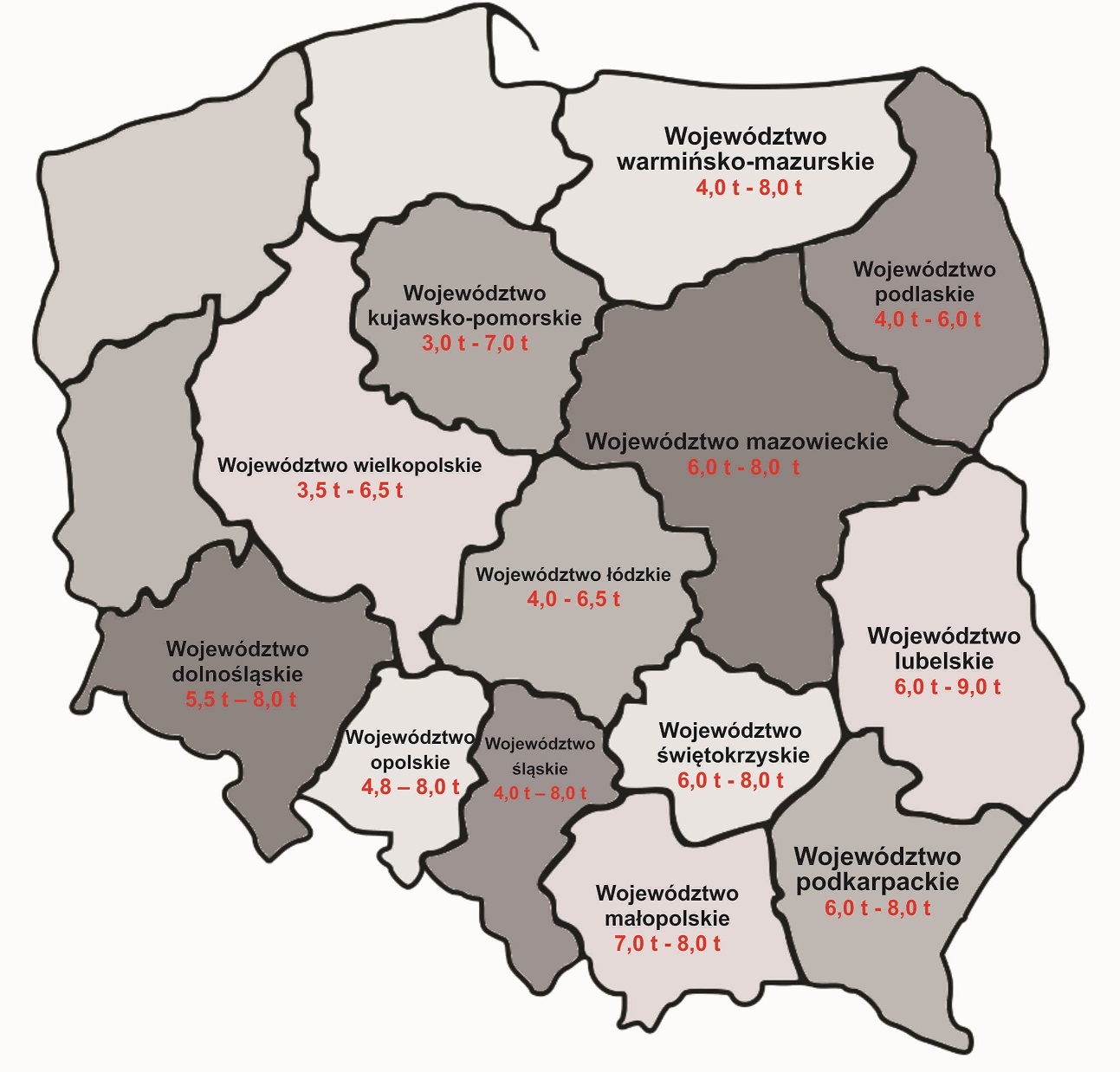
The beginning of 2019 was not favorable for agriculture. Snow-free winter, high air temperature variability and no rainfall in April resulted in the inhibition of plant growth and development. May brought the longed-for rainfall, but also the temperature drop.
June was unfortunately characterized by almost Saharan heat reaching almost 40 degrees Celsius. The heat and the long-lasting lack of rain led to excessive drying of the topsoil and faster maturation of cereals and rape, which limited their production potential. Also in June, we experienced local extreme climatic events such as hailstorms, thunderstorms and heavy rains.
The rapeseed harvest was estimated at 2.3 million tonnes, which is about 4 percent more than in the previous year, but the quality problem was the low weight of a thousand seeds and poor oiling. This was the first time in many years that this happened. Rapeseed in larger quantities did not even have 40 percent oil content.

Rape harvest according to data from befriended farms in various voivodeships looks as follows:
According to the current data, the winter oilseed rape cultivation area in Europe decreased by about 3 percent compared to the previous year - to 7.94 million hectares. In Poland, this decline in rapeseed cultivation is also progressing. The lower interest in production is influenced by unfavorable weather conditions and high expenditure, the consequence of which is lower yields and profit.
The harvest of basic cereals is estimated at about 24.6 million tonnes, which is about 8 percent more than last year's harvest. The data from the Central Statistical Office (GUS) also shows that the area of basic cereals is about 1 percent larger than last year's and amounts to 7.2 million ha.

Wheat harvest by data from befriended farms in various voivodeships look as follows:
In some regions, due to the drought, there was a problem with grain density. The water deficit affected the degree of its filling; Not everywhere was it fully developed.
The current grain prices are much lower than last year. For example, in the same period of last year, consumption wheat was more expensive by PLN 150/t.
Here are the current prices of grains, rapeseed and maize:
According to our data, the drought hit the Lubush Lake District the most. In the majority of the Lubush voivodeship and in the western part of the Greater Poland voivodeship, the water deficit is over -200 mm. A large water deficit was recorded in the western part of the Greater Poland Lake District, in the Greater Poland Lowlands, Podlasie and Silesia, and in the southern part of the Mazovian Lowlands and in Lubush Polesie. On the other hand, in the south of Poland and in the Masurian Lake District in this sixty-day period, the smallest water shortages, exceeding -110 mm, were recorded.